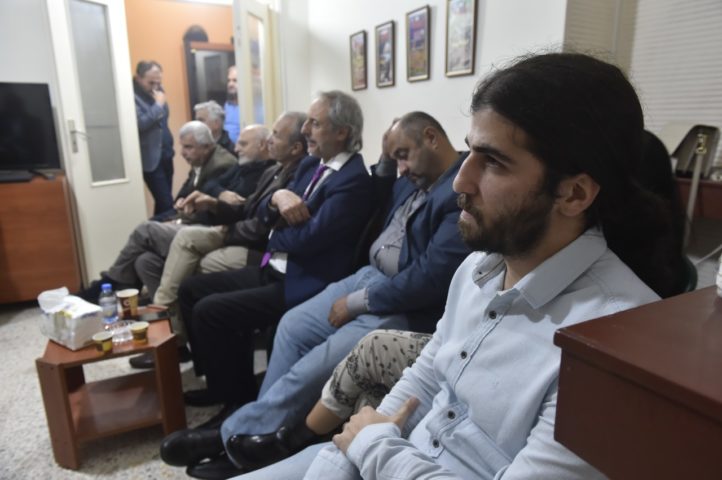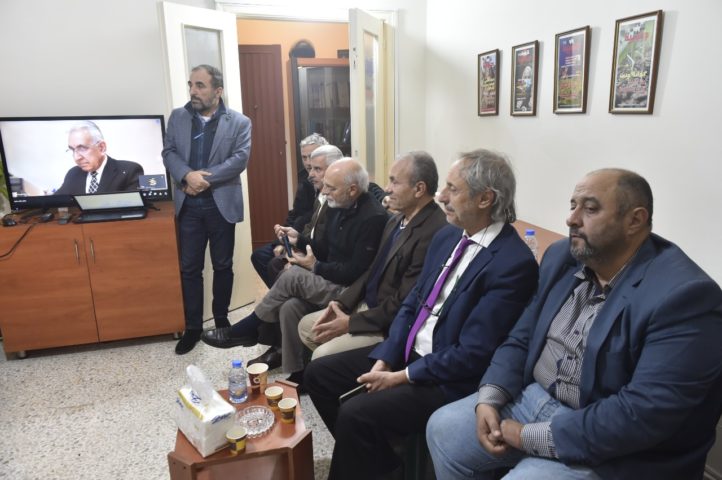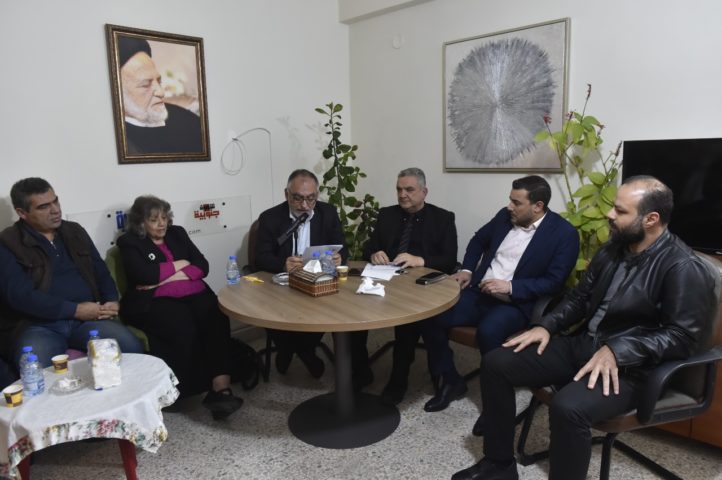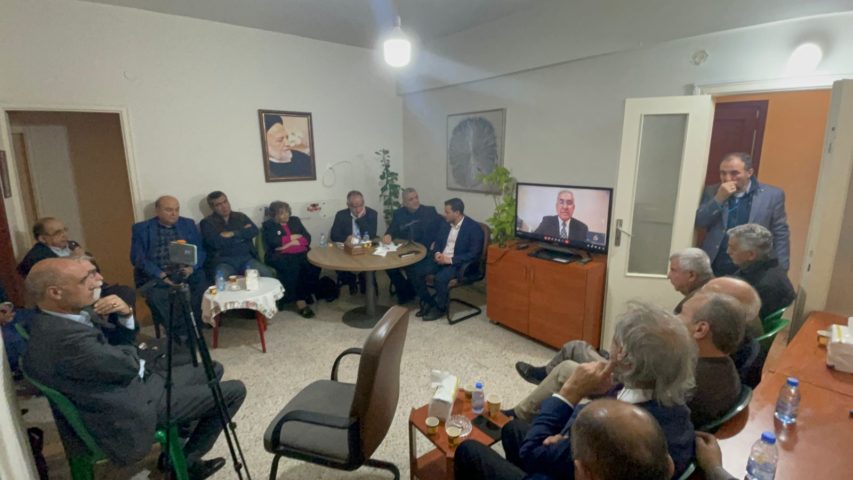
Tirelessly, restlessly, and at a steady pace, the protest movements against the ruling regime in Iran that were sparked by the death of a young woman, Mahsa Amini, are growing. Amini’s death occurred while she was in custody 3 days after she was arrested by the “Morality Police” for ‘violating’ the laws of modest attire. This incident unleashed the widest protest movements yet against the regime’s political and religious institutions with whom the people, young and old, but especially women—of whom some have paid the ultimate price— are fed up with. These people have launched the struggle for a country that matches their dreams and aspirations. Aspirations that do not match those of the repressive regime that exercises flogging on its people while serving them fake political and religious victories and keeping them poor, starved, and devoid of freedom.
The scenes in Iran are under a close observation, not only locally but also globally. The anticipation of the upcoming developments is growing at an equal momentum as the movements of the opposition in Iran desperate to extract its rights. This matter was highlighted for the first time in Lebanon in a seminar organized by ‘Janoubia’ entitled “The protests in Iran: Political dimensions and Religious Ramifications”. The seminar was driven by expert analysts on the subject as well as by testimony from an Iranian scholar representing the opposition. Throughout the seminar, discussions following the many developments carving out new political terrains for the people in Iran were examined.
Out of the indications and through the messages and their contents towards the demands and goals became the new and old journey that formed the focus of this ‘Janoubia’ seminar that was held in Ras El Nabeh. It was packed with detailed analysis and description of what the Iranian people are going through, as well as the repercussions incurred by the Khamenaei Regime. The seminar explored all the evidence and reasons that led to the popular uprising that filled many streets and squares across the entire nation. The panel featured each of Dr. Wajih Kanso, Mr. Hassan Fahs, and Iranian Professor, International Criminal Law Expert, and head of the Alternative Policy for Political Development Forum Dr. Mahmoud Masaeli via Zoom.
The Seminar was moderated by Journalist Mounir Al-Rabih with the notable attendance of former minister Hassan Mneimneh, Editor in Chief of Janoubia Ali Al Amine, Dr. Harith Slaiman, Dr. Mona Fayad, Political Activist Malik Mroue, Dr. Daoud Faraj, Researcher Mohamad Chamseddine, and media personalities: Hassan Ataya, Mohamad Nemr, Mohamad Hamoud, Mohamad Barakat, May Abdullah and others.
Mounir Rabih
“One cannot help but sympathize with popular movements whether they are demonstrative or revolutionary”.
With the following words by Mounir Rabih, the seminar was underway. “For weeks, Iran has been witnessing massive popular demonstrations in pursuit of multiple demands. These movements have taken a stance of breaking off with the regime, which is demonstrated by their attacks on the clergy. As such, this movement is different than the green uprising of 2009 which remained under the roof of the regime while demanding reforms. So, what are the dimensions of these movements, and what are the potential outcomes? These are questions that this seminar must answer.”
Rabih considered that “the situation in Iran opens the door to broad discussions that affect not only the Iranian interior, but also the developments taking place in the region as a whole. On the internal level, Iranian officials are accusing external forces of conspiring to weaken the regime from within. This indicates an a priori justification for the use violence, especially since there are multiple groups belonging to different nationalities, races, and sects. Will this be similar in this aspect to the Syrian example?
He pointed out that “over the years, those betting on the popular revolutions, especially the Arab ones, suffered many disappointments. The greatest disappointment was the thwarting the Syrian revolution, which was the result of an international strategic conflict that preserved the regime at the expense of the permanently hollowing the demographic of its components. All of that requires us more than ever to be more realistic in our analysis of the developments in Iran.”
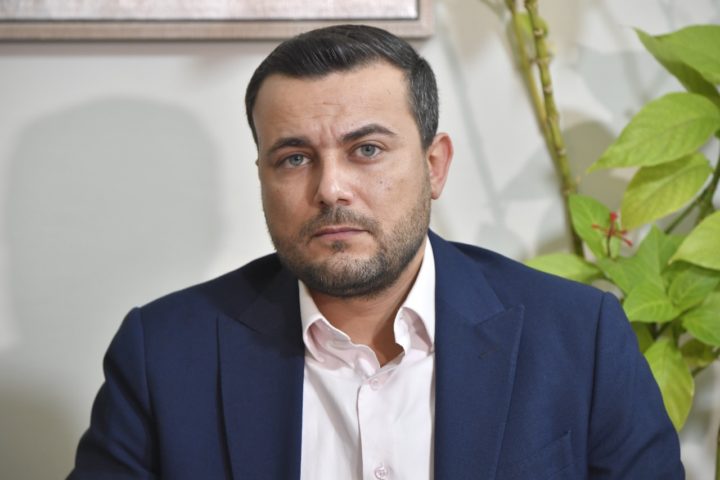
He concluded: “It is not possible to have separate analysis for the demonstrations or movements and regional/international contexts. We must seek to align our readings of these contexts from the vantage point of conflicting international positions that will, in future negotiation, put these demonstrations on the negotiating table.”
Wajih Kanso
According to Wajih Kanso, the killing of the young girl by the name of Mahsa Amini created a symbol for the movement. He explained that: “Because of the symbolism of Mahsa Amini, all women and members of society became victims, and the murderer was the security state. That meant that the case took a sharp turn and exploded across society, and due to the scale of the reactions, many headlines erupted, touching on various core issues, such as the problems over religion, freedom, and the state.”
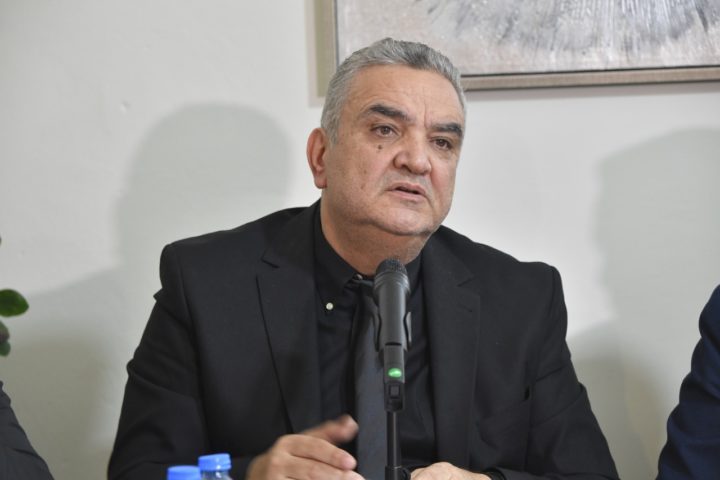
Kanso believed that “the regime is trying to prevent the emergence of these headlines, not only by suppressing them, but also by preventing their discussion. The regime’s leader directed a lot of words disparaging this real and genuine and real social phenomenon by describing the demonstrators as stupid and insignificant; as well as doubting the movements authenticity.”
Wajih Kanso: What is unfolding is not a protest against the regime, but rather a rebellion and the beginning of a break with the idea of Velayat-e faqih
He pointed out that: “In addition to the political examination of the regime’s dealings with the situation and its attempts at suppression while the movement persists and causes change in the social landscape that will have many effects, there are also significant ramifications from a religious examination. The protests created a lot of new questions, including the legitimacy of the regime itself. This is not referring to the legitimacy of the regime nor the ruling class and its ability to adhere to the letter of the law, the problem is now the legitimacy of the imposed religion-based law itself.”
Kanso addressed what he called “the most dangerous symbol, which is the symbolism of taking off the veil, which does not mean abandoning chastity and rejecting the rulings of religion, but rather refusing to link Sharia with authority and linking religion with coercion.” He said: “The veil is imposed by the morality police, and the title of ‘morality’ is the provocateur. I do not understand how morality has a police force! Morality is simply the emanation of moral behavior as a self-stimulus, which means that the will produces its ideas. Morality is the direct product of free will. Man can only act morally if he is free to do so!”
He added: “The authorities are taking a step forward through their behavior, and this is one of the forms through which they are trying to expand through their occupation of the public arena in order to disrupt society”, and stressing that “the Hijab is a private matter and dress is a private matter as well… When the regime imposes itself in such a private matter; it is an invasion and violation of personal boundaries. This means that it plays a game of defining and imposing values and creating a state of self-subordination. This means that the authority i.e. the moral police is not satisfied with intimidation, oppression, and subjugation alone, but also seeks to transform society into a disciplined, self-submissive society. By entering the personal realm, this authority attempts to subdue the people from within.”
On the symbolism of Wilayat al-Faqih and its self-contradictions, Kanso considers that it “promotes the principle that the will of the regime is the will of God Himself, and any attack on that principle is not only an attack on society, but an attack on religion itself.” He said: “We are witnessing the beginning of the end stages of his (Khaminei) mandate; not the system itself, but the idea of Wilayat al-Faqih. The core problem with this idea is that it placed the human will in its opposition; meaning that the leader (Al-Fakih) has all the same authority of a prophet which is complete authority. This results in his will becoming opposite the will of God, for those wills are not aligned as they would be in the case with the prophet. Wilayat Al-Faqih has set out to impose its will against that of God; in other words, it put the word of humans before the word of God.
He added: “The consequence of this idea is the production of a deficient society that cannot decide its own fate and requires a guardian.” He continued: “This concept does not only erode society, but it degrades its capabilities and makes it deficient. It causes a total loss of self-confidence. Moreover, it is an idea that bears contradictions within itself. and it went through a historical moment that the regime knew how to pass, after the success of the revolution because it was not an Islamic revolution in the exclusive sense, it did not The revolution of the state of the jurist was not in the exclusive sense, but rather it was a revolution of a society against a tyrannical regime for certain circumstances and circumstances that established the formula of government, but it is an idea that carries many contradictions.”
He explained: “When the will of the individual, or that of society, realizes that it has been usurped, the reaction is to take it back to its free state. Therefore, the current scene is not that of protest against the regime but of rebellion, a break, or the beginning of one with the idea of Wilayat Al-Fakih that constitutes the foundation of the regime. Here we are not talking about the legitimacy of an authority, but rather the bedrock on which the regime based itself.”
He concluded by saying: “It seems that the events have crossed the point of no return, as the regime cannot back down because it knows that this means a concession and a fall of its prestige, while uprising appears to be, based on its persistence, far away from retreat, as it knows that will lead to more oppression. The fulfillment of the will of this society requires a lot of determination that it does seem to have.
Dr. Mahmoud Masaeli
Dr. Masaeli began his video presentation from Canada describing the Jus Cogens: Peremptory norms. These norms are a set of principles that cannot be derogated, and they supersede any customs or treaties. The Jus Cogens typically include the prohibition of Aggression, war crimes, torture, genocide, and racial discrimination. They are so essential for securing the fundamental interests of the international community that any breach of them is to be considered as a crime against the benefits of that community. The Jus Cogens acquire the characteristic that they cannot be derogated under what is called sovereignty, the sovereignty of a state, an authority, or any other structure.
And he touched on “the absolute prohibition of any war of aggression, crimes, war of genocide, or attempts at racial discrimination within the components of society, promising under the name of peremptory rules of public international law,” pointing out that “the practices of the existing political system in Iran are tampering with these rules, as it does not work to secure the basic interests of society, and there are violations of it in more than one place or instance.”
Masaeli: There are flagrant violations of Jus Cogens and public international law, specifically when it comes to the suppression of peaceful protest.
He said: “Some violations break the peremptory rules in this general international law, and there are crimes that fall within the jurisdiction of a number of courts as crimes against humanity, such as war crimes courts and courts for crimes of aggression,” noting that “imprisonment or deprivation of liberty constitutes an explicit violation of the basic rules of international law. That in addition to the infliction of torture and persecution upon persons or groups of a racial, ethnic, religious, cultural, or gender classifications.”
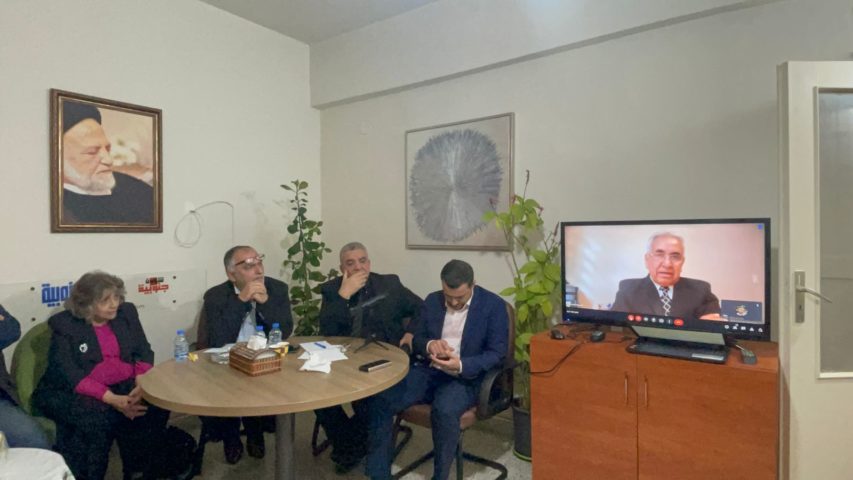
Masaeli: The practices of the existing political system in Iran are tampering with these rules, as it does not work to secure the basic interests of society, and there are violations of it in more than one place or instance.
Masaeli addeed that “there are flagrant violations of Jus Cogens and public international law, specifically when it comes to the suppression of peaceful protest.”
Masaeli considered that “the Iranian regime’s political practices, especially in the spread of armed groups outside the political borders of the state, are a violation of the principle of state sovereignty, military operations, complicity in crimes and threats of force, all of which fall within the framework of violating the peremptory rules of public international law.”
Hassan Fahs
Under the slogan “Stops along a long road”, Janoubia colleague Hassan Fahs openned his statement by saying: “From the basic axiom that is dealing with the Iranian regime as a political entity that uses religion as its identity, what follows from my commentary will fall within the framework of critique of the regime, away from its assumed identity. That is, dealing with a regime that relies on authoritarian policies that have nothing to do with religion, and away from the sanctity it assumes and tries to perpetuate in order to become immune to criticism or even opposition.”
Fahs considered that “when the Iranian Supreme Leader and the regime took the decision in 2005 to defeat Hashemi Rafsanjani, who is considered one of the historic pillars of the regime and the revolution, in the presidential elections against then candidate Mahmoud Ahmadinejad, who was chosen in advance, the decision was tantamount to giving a military order to one of the supreme leader’s soldiers to shoot the general— who was until yesterday the safety valve for the survival of the regime and the revolution. Little did the first general know that the first line of his defense was indeed the general he ordered shot, and that targeting the soldier later on would backfire on him and make him a vulnerable target.”
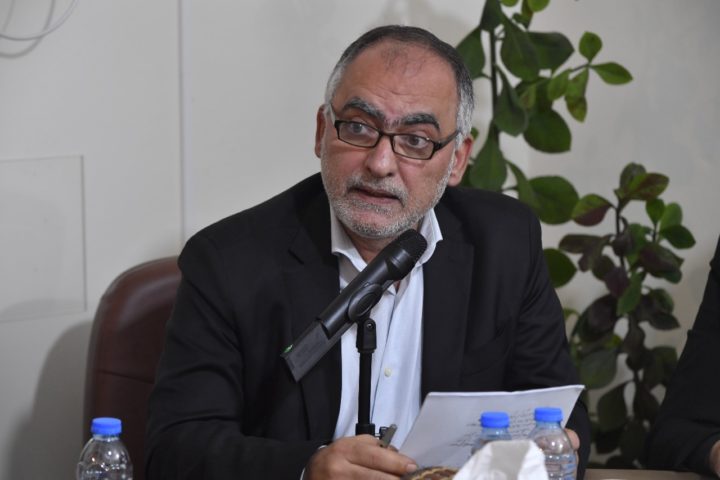
Fahs also said that “the regime, or the authority seeking to take over the decision-making positions, secure its own interests, and cancel and exclude any opposition seeking to disrupt the centralize power and authority of the supreme leader for building an Islamic government with absolute authority paving the way to formally remove the inherited mechanisms of democracy, has reached a euphoric state following the arrival of Ibrahim Raisi as the head of the executive branch as the president of the republic. This came after the legislative branch was already controlled; leaving no room for any opposition or non-loyalists.”
He added, “these policies were engineered and directed by an unelected authority chosen by the Supreme Leader known as the constitutional protection council, which is supposed to act similar to a constitutional council in democratic countries and constitutional regimes. However, it was transformed into a tool that acted as a guillotine that targeted competitors or threats to the regime. This council through the Eligibility Study Committee, or by its Persian name, “Nazarat Istiwabi”, set the required tone of those who are entitled to run and have the eligibility to participate in the parliamentary elections and the presidency of the republic or not.”
Fahs pointed out that “until recently, before the ninth of July, the regime and its agencies did not view the state of agitation and anger that emerges from time to time in the Iranian street as a result of the economic conditions, as a source of concern or danger to the regime or the state, because it believes in its ability to deal with the repercussions, no matter how loud and sharp they are in their criticism of the government and its agencies as long as they are far from any reference to the Supreme Leader.
He explained that “the decision to arrest Mostafa Tajzadeh, the reformist leader and political aide to the interior minister during the reign of President Mohammad Khatami, and one of the names nominated by the Supreme Council of the reformist parties for the presidential elections against Raisi, and his rejection by the Guardian Council headed by Jannati, revealed the extent of anxiety and tension experienced by the regime and the security services. Especially since the discussions and positions that constituted the political platfrom for Tajzadeh’s activity revolved around the need to reconsider the foundations of the Islamic system and the powers of the Supreme Leader who has absolute power and authority, as he has the first and last say in all internal social, economic, financial, cultural, and foreign measures and strategies. This includes regional influence and the power to obstruction an agreement with the international community on the nuclear program, which helps in getting out of the sanctions circle.”
He pointed out that “what distinguished Tajzadeh is that he had the bravery to speak directly and bluntly towards the position of the Supreme Leader; something that the regime is unable to bear as it threatens the sanctity surrounding the position that has to be shielded from criticism, doubt, and accountability. This meant that the general who had ordered the soldier to aim is now a target themselves, and that is unacceptable.”
He said: “In addition to the core and pivotal slogan that constituted the socio-cultural demand for the movement that exploded after the killing of Mahsa Amini, demanding women’s freedom to choose between wearing or removing the hijab and summarizing it in the equation of “woman, life, freedom”, the voice of those calling for regime change and objecting to the ruling system was not just limited to the slogan “Death to the dictator”. Rather, it evolved to target the Supreme Leader and held him responsible for the suppression and killing carried out by the state’s agencies and unidentified security forces, which can be described as the “black shirts”, as they are familiar in Lebanese literature.
He added, “It may be the first time that the street imposed itself on the leader, with all he represents in terms of the position, powers, and sanctity that the regime tries to consecrate and bestow on his position as the supreme jurist. To hear criticism directly from the street, and even from political and social activists who previously relied on directing criticism towards the system in general away from the person which is the supreme leader was a cause for panic.”
He said: “The feeling of ‘abandonment’ may be behind the leaders resorting to mobilizing the role of the ‘Basij’ forces and re-amplifying and shedding light on its role in defending the regime and protecting it from conspiracies against it from the outside and from within. The agencies and institutions that used the guise of defending the leader to suppress and exclude opponents from political forces, are now seeking to distance themselves from the backlash and minimize the damages they could incur.”
It was important to note, said Fahs that “The regime and the supreme leader, in an attempt to divert attention from the internal social and cultural challenges they are facing, sought to exaggerate the external factor and represent it as a foreign conspiracy targeting the Iranian regime along with its regional role and influence. They asserted that their enemies, mainly the United States and Israel, were seeking to divide Iran; a concern that indeed was prevalent as a result of the extensive negligence and injustice that the regimes policies have inflicted upon the peripheral regions that are largely inhabited by racial and ethnic minorities such as Azeri, Kurds, Baluchi, and Arabs. This allowed the military establishment to focus on the conflict with these parties, by exaggerating the role of the historical separatist parties and their armed wings, and launching an attack on them to cut off any potential threat.
Hassan Fahs: This movement revealed a fact that cannot be overlooked. Change in Iran is governed by internal action because the people are the most capable of fighting that battle on their own.
Away from the popular movements on the streets of Iran Fahs said there is a “struggle of a different kind going on behind the scenes of the regime over the future of the regime and the successors. This time within the conservative movement which supports the regime, and one of the first effects of this conflict is the exclusion of the current president, Ibrahim Raisi, from any future he has within the regime after murmurs over his shortcomings transformed into public demands for restructuring of the office of the presidency and even rescinding his executive powers and leaving him as a symbolic president. This may have been a factor that pushed many of the conservative movement away from any radical involvement, so that they would not risk their chances of coming into power when their time would come. This is because the military establishment represented by the revolutionary guard, may be forced, in the event of catastrophe, to intervene decisively in this conflict and deliver into leadership someone else, but with a much lower ceiling of authority than exists today.”
Fahs concluded that: “It can be said that the protest movement that Iran has been witnessing for nearly three months is a real challenge to the regime and its religious and cultural identity, in terms of the demands raised by the protestors which present a different cultural identity and are in contradiction with the regime’s ideology. The actors in this movement may not be able to reach a satisfactory ending, and the regime may be able to control the situation sooner or later. However, they were able to establish new grounds. Firstly, the regime will from now on be forced to recognize their demands and concerns and find new ways, in their legislation and jurisprudence, to describe the gradual concessions they will be forced to make. This could lead the way towards even more concessions, as occurred with the issue of the hijab whose enforcement as an obligation has completely receded, as it returned into its natural optional state. Meanwhile, the law related to it will withdraw into the shadows and enter into a state of permanent suspension… This movement revealed a fact that cannot be overlooked. Change in Iran is governed by internal action because the people are the most capable of fighting that battle on their own.”
Analysing the motivations of change and its impact
Following the words of the seminar panel, a fruitful discussion ensued with rich analysis that covered the dimensions of the protests, their motives, and the results of the movement, which showed that change begins from within. In her comment, Dr. Mona Fayad considered that “the Iranian regime is a military-security regime and the people of Iran have historically been under oppression where any objection was met with assassination.” Noting that “this dissatisfaction with the regime exploded with protests that surpassed those only of women; without belittling their enormous step of removing their veils which carries great symbolism of public rejection of the imposition of policy by force.”
In turn, Abdullah Haddad saw that “using the expression of moral authority is unnatural, as morality stems from within,” pointing out that “the dominance of any authority over moral duty leads to the dominance of dictatorship and the use of repression.”
Kanso pointed out that “The regime has produced symbols and ideals that the opposition clashes with exposing a huge gap between these two societies. This demonstrated that the regime was not capable of penetrating effectively within society.”
As for Fahs, he pointed out, “The conflict is about the cultural crisis between the religious authority and the people who reject what it has been trying to impose over the years.”
Hassan Al-Qotb considered that “there is persistent problem between the regime and the people, and that is that opposing the Supreme Leader is opposing god according to the regimes standard.”
In his part, Daoud Faraj said, “The Iranian regime is based on religion, and the question is: How did the regime derive over the past years its power and philosophical interpretations upon which the guardianship of the jurist (Supreme Leader) is based?”
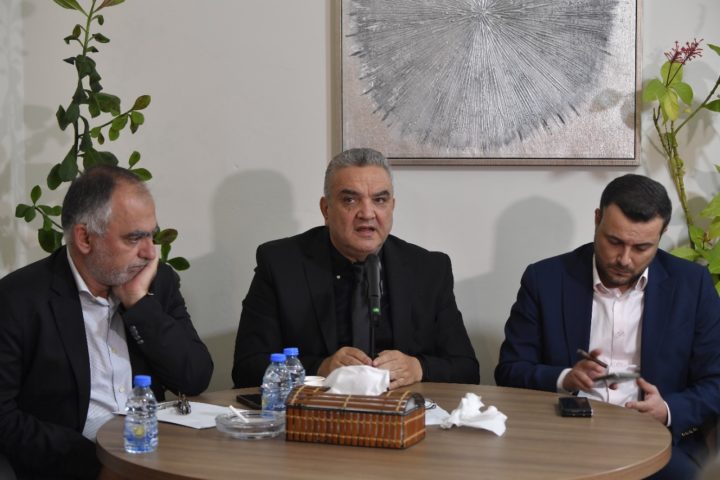
Hassan Fahs, Wajih Kanso, Mounir Rabih 
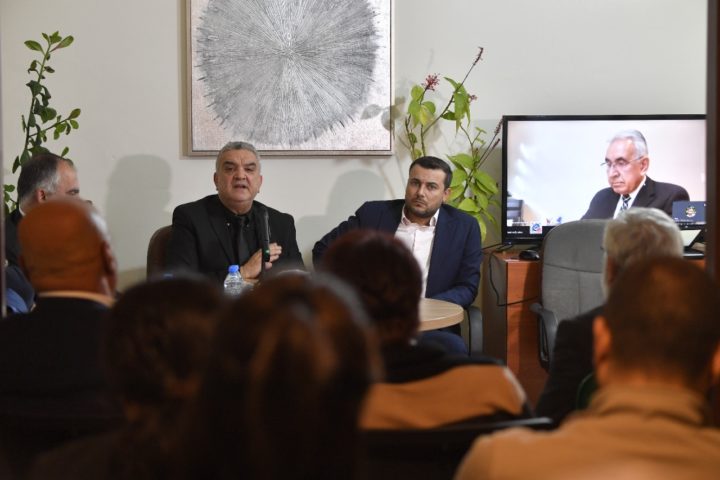
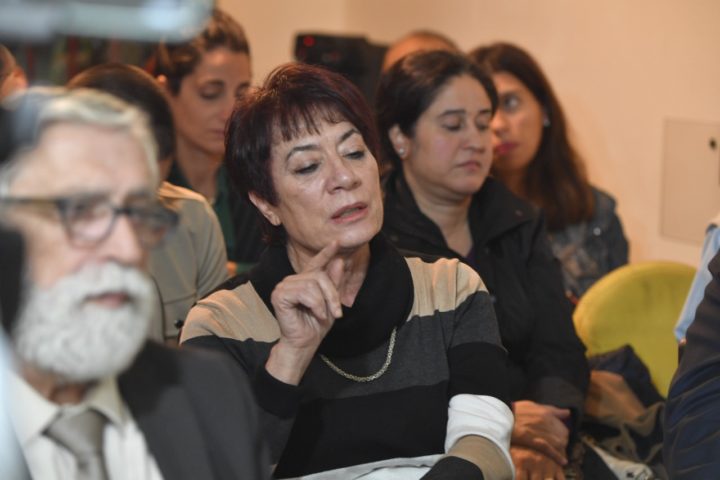
مداخلة لمنى فياض 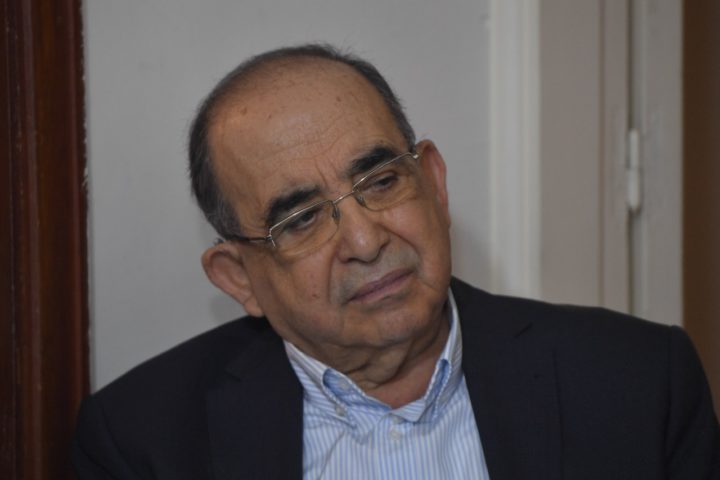
حسن منيمنة 
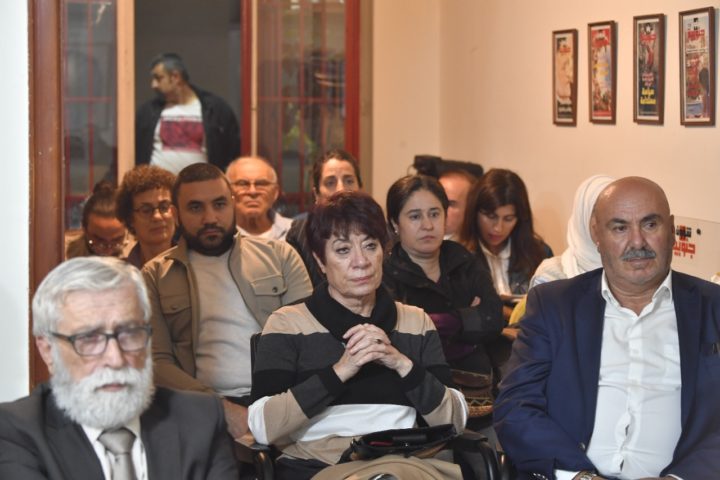

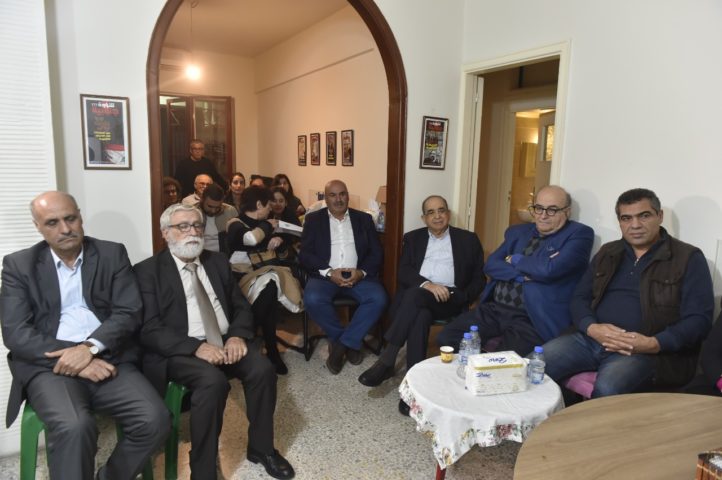
من الحضور 
